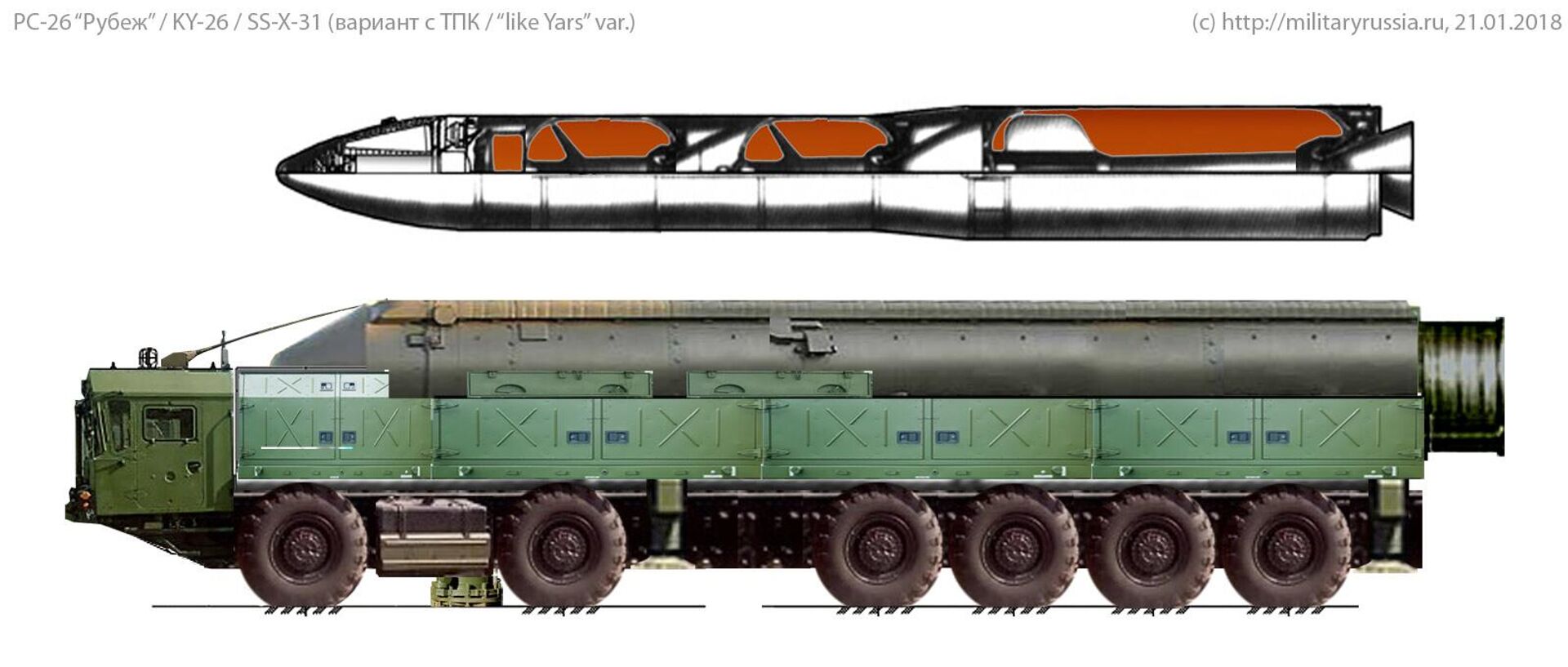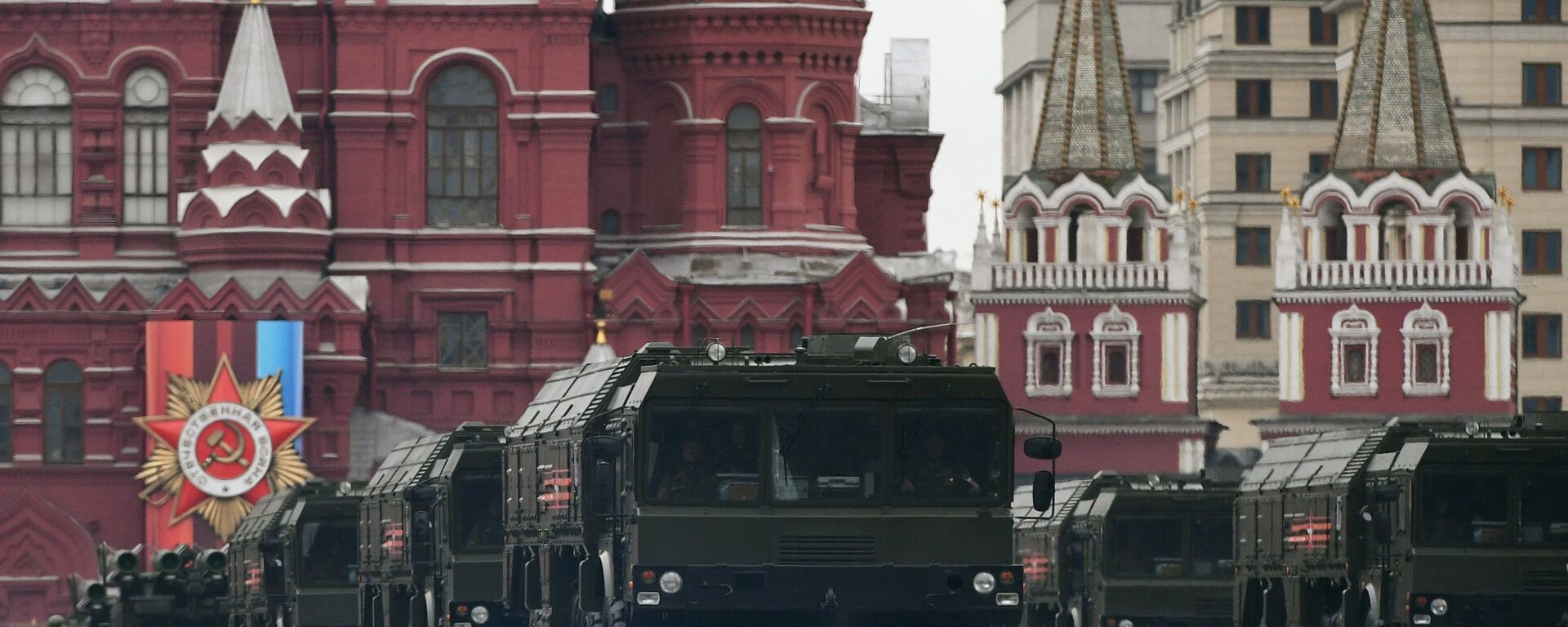Scott Ritter: With Dark Eagle Hypersonic Missiles in Europe, ‘One Mistake’ Could Spark All-Out War
10:49 GMT 20.07.2024 (Updated: 10:50 GMT 20.07.2024)
© Sputnik
Subscribe
Russia has vowed a military response to US’ plans to deploy strategic, ground-based missiles in Germany by 2026. Scott Ritter, a former UN weapons inspector-turned international affairs observer who literally wrote the book on arms control in Europe in the 1980s, tells Sputnik why the prospective deployment is so dangerous.
The White House announced plans to deploy three types of strategic missiles in Germany last week, with the new capabilities set to include:
Ground-launched Tomahawk cruise missiles, which became available to the Pentagon after the US unilaterally scrapped the Intermediate-Range Nuclear Forces (INF) Treaty with Russia in 2019. The Raytheon-manufactured missiles have a range anywhere from 460-2,500 km, and can be armed with conventional or low-to-intermediate yield nuclear warheads.
The SM-6 – a long-range surface-to-air-missile system which can be launched from the US Army’s new Typhon Mid-Range Capability (MRC) missile system, or the Aegis Ashore air and missile defense systems the US has deployed in Romania and Poland. Manufactured by Raytheon. Firing range of 240-460 km.
Unnamed ‘hypersonic’ capabilities widely speculated to be the Army’s Dark Eagle Long-Range Hypersonic Weapon (LRHW) – the only one of the half-a-dozen plus US hypersonics programs anywhere near operational status. Developed by Lockheed Martin. Reported range up to 3,000 km. Payload unknown.
“It’s the Dark Eagle that is perhaps the most destabilizing,” former weapons inspector and US Marine Corps intelligence officer Scott Ritter told Sputnik. “While it is not a nuclear-capable missile, it is a system that has the ability to strike deep inside Russia with precision hypersonic warheads that are virtually impossible to intercept,” Ritter explained.
With such a system, the observer noted, Pentagon planners and hawks in Washington may be tempted to launch aggression against Russian military and leadership targets. This would be in line with the DoD’s long-running Conventional Prompt Strike (formally Prompt Global Strike) initiative – a program which has been in the works since the 2000s.
“This is an extraordinarily destabilizing development, and Russia has said it will respond,” Ritter said, noting that while “the specifics of a Russian response aren’t known,” it’s possible that it may include resuming development of the RS-26 Rubezh – a solid-fueled intermediate-range ballistic missile with a nuclear multiple independently targetable reentry vehicle (MIRV) or maneuverable reentry vehicle (MaRV) payload.

Artist's impression of RS-26 Rubezh's possible configuration on the base of the RS-24 Yars ICBM mobile ground-based launched strategic missile system.
© Photo : MilitaryRussia.ru
“It’s believed that Russia could bring this system back into operation and deploy it in short order. The RS-26 is a road-mobile system that has the ability of carrying three Avangard hypersonic [glide vehicle] warheads that are nuclear-capable,” Ritter said.
The former weapons inspector, who wrote a book on his experiences working with the On-Site Inspection Agency in the late 1980s to verify the USSR’s compliance with the then-recently ratified INF Treaty – which was designed to dramatically reduce nuclear tensions in Europe by eliminating all US and Soviet ground-launched missiles in the 500-5,500 km range, told Sputnik that Washington’s plans to deploy missiles in Germany again are eerily familiar to him.
“We’ve gone back in time. It’s back to the 1980s, back to a situation where the United States and NATO and Russia once again face off with weapons that are inherently destabilizing. One mistake, one miscalculation, one misjudgment could lead to a situation where these missiles are fired in anger, and this would lead to the potential of a general nuclear exchange between the United States and Russia,” Ritter warned.
“The American and German decision to deploy the intermediate-range capable systems into Europe is one of the most dangerous decisions that have been made by the US and NATO in a season of dangerous decisions. It’s an irresponsible escalation that, unless it’s reversed, can only lead to very tragic conclusions. It’s déjà vu all over again. We got rid of these weapons once. We made the world safer. The question is, can we do it again? And I would say with the current American and European leadership, the current American and German leadership, I’m not holding out much hope,” the observer summed up.


